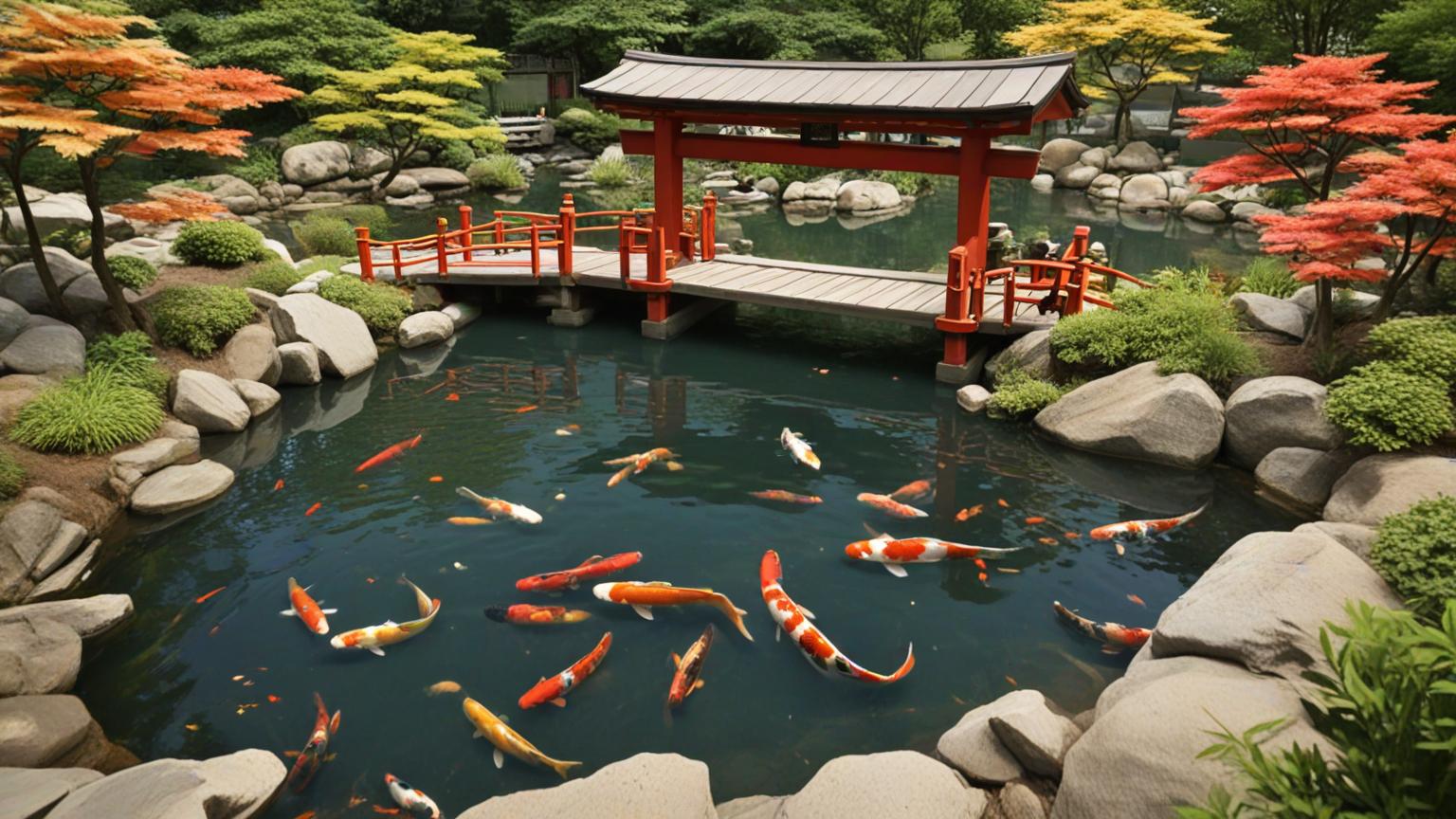Koi fish, with their striking colors and graceful movements, have long been admired in aquaculture and garden ponds. Originating from Japan, koi (or Nishikigoi, meaning “brocaded carp”) are not just decorative fish; they are rich in cultural significance, ecological importance, and educational opportunities. This article explores the educational aspects of koi fish, including their history, care requirements, and conservation efforts.
Historical Significance of Koi
The story of koi fish begins over two millennia ago when they were first domesticated in China for food. However, it was in Japan, during the 19th century, that koi began to be selectively bred for their vibrant colors and patterns. Koi were initially kept by farmers in rice paddies, where they provided an additional food source. As koi became more popular, they transformed from a food fish into a symbol of beauty and good fortune, leading to their esteemed place in Japanese culture.
Understanding the historical context of koi provides insight into their cultural significance. In Japan, koi symbolize perseverance, strength, and the ability to overcome adversity, drawing from the legend of koi swimming upstream against strong currents to reach the top of waterfalls. This rich history offers numerous educational opportunities to explore the intersections of culture, art, and nature.
Koi Varieties and Their Characteristics
Koi come in many varieties, each with unique colors, patterns, and characteristics. This diversity can serve as a fantastic educational tool for students and enthusiasts alike. Some popular varieties include:
- Kohaku: White koi with red markings.
- Sanke: White koi with red and black markings.
- Showa: Black koi with red and white patterns.
- Asagi: Blue-gray koi with red markings on the belly.
- Shiro Utsuri: Black koi with white markings.
Educators can use the variety of koi to teach lessons on genetics, color theory, and even mathematics through the exploration of patterns and shapes.
Essential Care for Koi Fish
Caring for koi fish presents numerous educational opportunities for understanding biology, ecology, and environmental science. Key components of koi care include:
- Pond Design: Koi require a spacious pond that can accommodate their growth, typically at least 1,000 gallons in size. Educators can discuss principles of environmental design, ecosystem balance, and the importance of aquatic habitats.
- Water Quality Management: Maintaining clean and safe water is crucial for koi health. Topics such as pH levels, ammonia, nitrite, and nitrate concentrations can lead to discussions about water chemistry and its effects on living organisms.
- Feeding Practices: Koi are omnivorous and thrive on a varied diet that includes commercial koi pellets, vegetables, and fruits. Lessons can focus on nutrition, the food chain, and the role of omnivores in ecosystems.
Health and Disease Management
Koi can be susceptible to various health issues, which can serve as an entry point for discussions about veterinary science, biology, and conservation. Common health problems include:
- Parasites: Such as ich or flukes.
- Bacterial Infections: Like fin rot or columnaris.
- Environmental Stress: Resulting from poor water quality or sudden temperature changes.
Understanding how to prevent and treat these issues fosters a deeper appreciation for animal husbandry and veterinary practices. Educators can integrate lessons on disease management, biosecurity, and the importance of maintaining biodiversity in aquatic ecosystems.
Conservation and Environmental Impact
Koi fish are not native to all regions, which raises important conversations about ecological balance and conservation efforts. Koi can impact local ecosystems if they escape into the wild, potentially disrupting native species. Therefore, discussions about responsible koi keeping, environmental stewardship, and the balance between aquaculture and natural habitats are vital.
Conservation efforts can also extend to preserving traditional koi breeding practices and protecting the biodiversity of aquatic life. Educators can engage students in projects that raise awareness about the importance of sustainable practices in both koi keeping and broader environmental contexts.
The Educational Value of Koi Keeping
Keeping koi fish can be an enriching educational experience that extends beyond mere aesthetics. It teaches responsibility, fosters an appreciation for nature, and provides practical skills in biology, ecology, and environmental management. Through the lens of koi keeping, individuals can learn about critical life sciences, cultural traditions, and the interconnectedness of all living things.
Whether in a classroom, community center, or home setting, koi offer a unique opportunity to explore a variety of subjects while promoting a love for nature and lifelong learning. The beauty of koi fish is matched only by the depth of knowledge they can inspire, making them an ideal subject for educational exploration.

